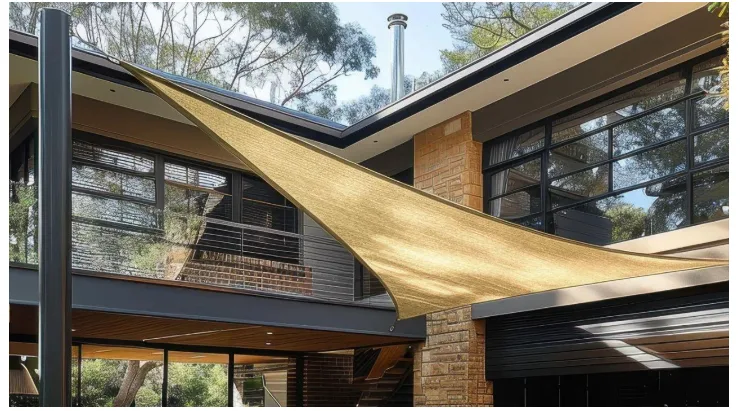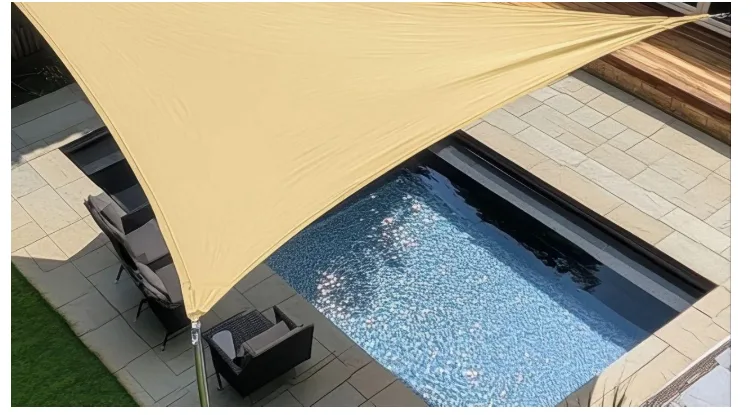The Best Things to Avoid in the Selection of a Shade Sail
A shade sail might appear to be a rather easy choice, but it is far more than making a decision to buy a piece of fabric and attach it to the posts. The sun shade sails are some architectural features that can change outdoor spaces in terms of visual appeal and functionality. After selecting and fitting them, they offer protection against the sun, beauty, and an improved utilization of patios, gardens, poolside areas, and commercial sites. However, inability to consider certain crucial details during the selection processes can result in poor performance, safety, and even property damage. To help a homeowner, designer, and business owner make an informed choice, consider more carefully what errors one must avoid when choosing a shade sail.

Neglect of the Purpose of the Shade Sail
Among the most common errors that individuals commit in choosing the shade sail is the inability to think about the main objective of the shade sail they are going to use. Shade sails are not equal, and various models are manufactured to suit various needs. There are some that are made only to protect against UV radiation, and others that are meant to provide coverage against water. A permeable HDPE sail might be ideal in a hot, dry climate, but in a region of frequent rains, a waterproof polyester sail would be ideal. Disregard of these functional differences may result in disappointment in case the sail fails to behave in the expected manner. When selecting, the process must always start with the identification of the particular environmental conditions and the intended use.
Selecting the Wrong Size or Shape
Poor sizing is one of the most common problems, and usually this is because the dimensions of the area that requires covering are underestimated. The wrong choice of a sail of too small a size may lead to insufficient shade and an aesthetically displeasing installation. On the other hand, a sail that is too large can hang or need anchor points that cannot be achieved. Form is equally important. Triangular sails are sleek-looking but modern and offer less cover than rectangular or square sails. Selecting the wrong shape without considering the angles of sun exposure and the placement of the area may result in shady patches or even a total uselessness at some times of the day. Measuring and planning are the keys to the best results.
Failure to observe the Sun Path and Orientation
Among the most technical and yet very important errors when it comes to choosing a shade sail is the failure to consider the path of the sun both during the day and the seasons. An effective location of a shade sail should also consider the position of the sun at rising and setting, and the angle at which the sun is in the summer and the winter. Without this foresight, a sail might be good in the morning and almost useless in the afternoon. The failure to examine the orientation of the sun will lead to the wastage of investment and a building that will not serve in times of need. The location of shade needs and when they are needed can be determined with the help of a sun path diagram or with digital planning tools.
False Use of Inadequate or Weak Anchor Points
The shade sails are quite dependent on the right tension to stand in a stable position and effectively work. The common mistake that most people make is to tie the sail to flimsy or inappropriate structures. It can be hazardous to attach a sail to fence posts, small trees, or thin beams. Wrong anchors may lead to the fabric sagging, tearing, or even falling to a level that would be dangerous to people and property. A firm and steady anchoring point is needed, like steel poles, thick wooden posts embedded in concrete, or reinforced walls. In cases where it is needed, it is a good idea to invest in purpose-built mounting hardware that can make a difference both in safety and the lifespan of the sail.

The Low Estimates of the Significance of Tension and Slope
Adequate tensioning is the most important aspect of shade sail performance. A lack of tension will cause the sail to droop, flapping and catching rainwater in the middle, causing stress in the material and resulting damage. It is also important to provide sufficient slope in order to facilitate water runoff, particularly in the case of waterproof materials. It is common to see many of the vessels having their sails set wholly and squarely to the wind, which is very pretty, but not at all convenient in wet weather. The angle of the least one corner must be downward so that the rain water does not form a pool on the fabric, which may stretch the fabric and even tear it apart. Failure to do this undermines functionality and life span.
Failure to consider Wind Load and Local Climate
The second common mistake is the inability to consider the local wind conditions. When the tensioned shade sail is in a windy location, the forces on it may be large. Poor selection of material, improper mounting hardware, or mounting the sail in too exposed an area can all lead to structural failure. In high-wind regions, breathable HDPE cloths tend to work better, since the air can move through them, minimizing wind resistance. Conversely, waterproof sails may become parachutes when misinstalled, and they trap wind and pull on anchors. To be successful in the long term, it is crucial to align the design and material of the sail with the climate.
Ignorance of Aesthetic and Design Elements
It is important to be practical; however, it is also a mistake to ignore the visual effect of a shade sail. The sail forms a notable part of the outdoor design and must fit into the design. The wrong color, shape, and size can serve to create disharmony in the space. Custom shade sails allow one to match with furniture, landscaping, or architectural styles to complement and not take away from the environment. Taking into consideration both aesthetics and the functionality of the sail will make it not only a well-functioning sail but also a beautiful one.
Conclusion
These are some of the errors to be avoided so that the shade sail can become a permanent outdoor structure as opposed to becoming a liability in a short duration of time. A shade sail can be a very beautiful and usable part of any space. With expert guidance, durable fabrics, and customizable options for thehues, homeowners and designers can ensure that their shade sail not only enhances the aesthetics of the space but also provides lasting functionality.
